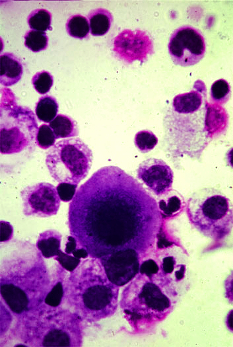More needed to cut work cancer rate
 The Cancer Council says that despite great efforts to improve, the risk of carcinogen exposure still stalks Australian workplaces.
The Cancer Council says that despite great efforts to improve, the risk of carcinogen exposure still stalks Australian workplaces.
Between 2500 and 7600 new occupational cancer cases are caused by exposure to carcinogens in Australian workplaces every year.
The lack of a precise figure reflects a lack of research, accurate monitoring of workplace carcinogens and information to cancer-causing substances.
In a study conducted last year, about 40 per cent of Australian workers said they were exposed to one or more carcinogens in the workplace, with male workers and workers in regional areas the most likely groups.
Research has found solid links between asbestos exposure and mesothelioma; cadmium and lung cancer; benzene or diesel and leukaemia; and ultraviolet radiation and skin cancers.
While some cancer risks – such as those for firefighters – are better known, experts say more must done.
“We know it's not just firefighters who are at risk,” says Todd Harper, chief executive office of the Cancer Council Victoria, writing for Fairfax Media.
“Those employed in forestry and logging, wood, fixture or furniture manufacturing, the petroleum and coal products industries, fishing, construction, and mining are also thought to be at greater risk of developing cancer.
“Some hospitality employees are still exposed to tobacco smoke in their workplace.
“In particular there is an urgent need for a fairer and evidence-based compensation system for those who have developed a work-related cancer.
“Today, if an employee develops a disease from the Victorian government's Proclaimed Disease List, it is presumed that their employment caused the disease and they are then able to access financial compensation.
“The problem is the Victorian list has not been updated since 1958, even though our knowledge of what causes cancer has improved significantly. This is despite the information the list is based on having been updated several times by the International Labour Organization, most recently in 2010.
“This is an antiquated system that can make it costly and difficult for an employee to mount a case for compensation,” Harper said.
The Cancer Council chief has some suggestions to bolster regulation and in doing so, save lives.
“We can reduce the burden of harm from occupational cancers through a nationally consistent workplace health and safety laws that more effectively prevent exposure to carcinogens, and a fairer legal system that compensates employees who contract cancer or other diseases through their employment.
“These improvements would put us on par with ... countries such as Britain, where the evidence on industrial injuries, including occupational cancer risk, is regularly reviewed and updated by a government scientific advisory body.”







 Print
Print